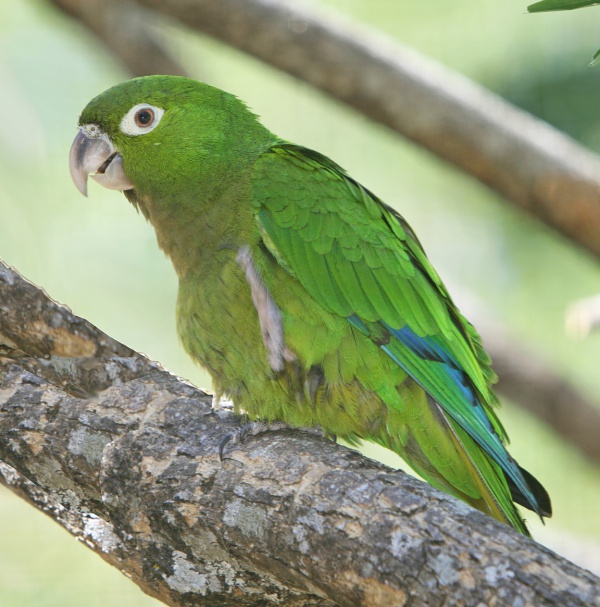Facts About Olive-throated parakeet
The olive-throated parakeet, also known in the pet trade as the olive-throated conure, is a vibrant member of the Psittacidae family. These birds are indigenous to forest and woodland regions in Jamaica, Mexico, and Central America, and have also been spotted in the Dominican Republic and potentially Puerto Rico.
These parakeets are easily identifiable, characterized by their olive throats and orange irises in adults, while juveniles exhibit brown eyes. They are notably vocal, often producing noisy screeches, harsh twitters, and piercing chirps. Measuring between 21.5 to 24 centimeters in length and weighing between 75 to 85 grams, they are considered medium-sized parrots.
There are two principal populations of olive-throated parakeets. The nominate subspecies is found in Jamaica, whereas the "astec" group, which includes the subspecies vicinalis, inhabits northeastern Mexico, the Yucatán Peninsula, and Central America.
These birds flourish in various wooded habitats, including hills, mountain slopes, cultivated lands, and scrublands, typically at elevations around 1,000 meters above sea level. Their diet consists primarily of buds, fruits, and occasionally crops, leading to their designation as pests in some regions.
Interestingly, olive-throated parakeets nest exclusively in arboreal termite nests situated in medium to large trees. While most experts consider the Jamaican and mainland populations to be the same species, some propose separating them into two distinct species: the Jamaican parakeet (E. nana) and the Aztec parakeet (E. astec).

 Guatemala
Guatemala